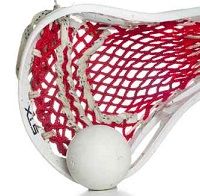Article
AMA: Lacrosse Helmets Common Sense
Author(s):
A flying lacrosse ball weighs more than 5 lbs and goes about 60 mph in the girls' version of the sport. Despite objections that there have been no definitive studies showing wearing headgear protects players, the AMA wants sports authorities to require girls teams to wear helmets.

Boys who play lacrosse have long worn helmets. But girls’ lacrosse is supposed to be a non-contact sport. Other than goalies, girls teams's players have gone bare-headed.
The American Medical Association’s delegates have voted to try change that.
Despite some protests that there are no definitive studies on the merits of requiring girls and young women who play lacrosse to wear helmets, delegates to the American Medical Association’s annual House of Delegates meeting today overwhelming voted to have the AMA endorse lacrosse helmets for girls.
Some members wanted to wait until studies were completed, but the members—some conceding that they were speaking as parents and grandparents as well as physicians—said they found it obvious that helmets would protect girls against concussions.
So far, Florida is the only state to require the helmets, and it has been criticized by US Lacrosse, the association behind the sport.
That group says Florida’s girls’ helmets—padded reinforced headbands—are too flimsy. US Lacrosse is working on a prototype protective headgear that it intends to endorse and offer to state sports associations.
Coaches have also objected saying helmets would be cumbersome and might even result in more injuries.
The AMA delegates didn’t buy the arguments.
“It’s parallel to baseball where a big part [of the risk] is the speed of the ball—that’s why goalies wear helmets,” said Melissa Garretsin, MD, endorsing the resolution.
One member from New York said his 13-year-old daughter had just such an injury a few weeks ago, a concussion from a lacrosse accident.
The ball weighs 5.25 oz. and in girls’ lacrosse travels at about 60 mph.
“The ball flies fast,” said Louis Kraus, MD, a child psychiatrist from Northbrook IL.
Another delegate pointed out that waiting for studies would likely mean that the resulting statistics would include some injuries, ones that could be prevented with an AMA policy recommendation that girls’ lacrosse team members wear the protective headgear.
A minority of members had objections, including one who said that soccer is the number one cause of sports injury in girls but no one is calling for helmets in soccer.
But the consensus was that helmets would help and likely not hurt.




